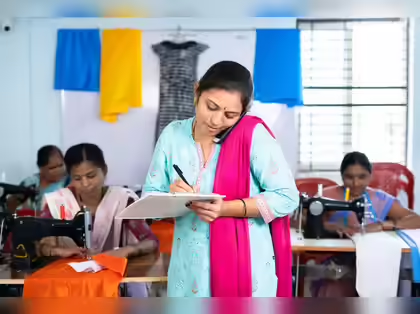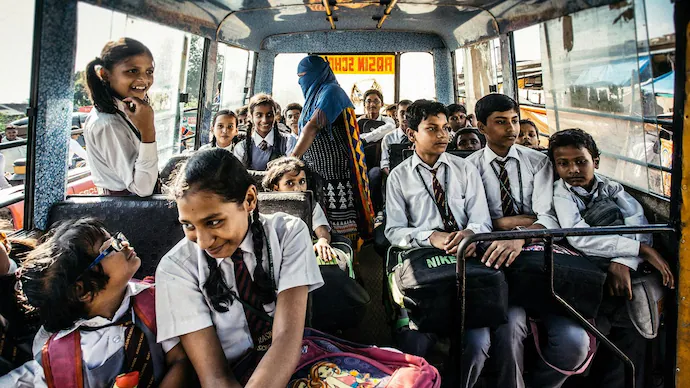- Courses
- GS Full Course 1 Year
- GS Full Course 2 Year
- GS Full Course 3 Year
- GS Full Course Till Selection
- Answer Alpha: Mains 2025 Mentorship
- MEP (Mains Enrichment Programme) Data, Facts
- Essay Target – 150+ Marks
- Online Program
- GS Recorded Course
- Polity
- Geography
- Economy
- Ancient, Medieval and Art & Culture AMAC
- Modern India, Post Independence & World History
- Environment
- Governance
- Science & Technology
- International Relations and Internal Security
- Disaster Management
- Ethics
- NCERT Current Affairs
- Indian Society and Social Issue
- NCERT- Science and Technology
- NCERT - Geography
- NCERT - Ancient History
- NCERT- World History
- NCERT Modern History
- NCERT Medieval History
- CSAT
- 5 LAYERED ARJUNA Mentorship
- Public Administration Optional
- ABOUT US
- OUR TOPPERS
- TEST SERIES
- FREE STUDY MATERIAL
- VIDEOS
- CONTACT US
Himachal Pradesh’s Bill Raising Women’s Minimum Marriage Age
Himachal Pradesh’s Bill Raising Women’s Minimum Marriage Age
The Himachal Pradesh Assembly has recently passed the Prohibition of Child Marriage (Himachal Pradesh Amendment) Bill, 2024. This bill proposes increasing the minimum marriageable age for women from 18 to 21 years. The aim is to amend the Prohibition of Child Marriage Act, 2006 (PCMA 2006) to advance gender equality and promote higher education for women. The bill has sparked significant debate regarding its implications for gender equality and its need for presidential assent.
What Does HP’s Bill on Women's Minimum Marriage Age Entail?
- Redefinition of 'Child':
- The Bill removes the gender-specific age distinctions in Section 2(a) of the 2006 Act. Previously, a "child" was defined as a female under 18 years and a male under 21 years. The Bill now defines a "child" as anyone under 21 years, regardless of gender.
- Extension of Petition Period:
- The Bill extends the period for filing a petition to annul a marriage from two years to five years. This extension aligns with the new minimum marriageable age of 21 years, allowing individuals to file for annulment before turning 23.
- Precedence Over Other Laws:
- Section 18A ensures that the Bill’s provisions take precedence over existing laws and cultural practices, creating a uniform minimum marriageable age across Himachal Pradesh.
Why is the Assent of the President Required?
- Governor’s Options:
- Under Article 200 of the Constitution, after a Bill is passed by a State Legislative Assembly, the Governor can grant assent, withhold assent, return the Bill for reconsideration, or reserve it for the President’s consideration.
- Inconsistency with Central Law:
- The Bill proposes a minimum marriageable age for women that differs from the central PCMA 2006, which might lead to conflicts with central laws.
- Constitutional Considerations:
- According to the Seventh Schedule of the Indian Constitution, marriage and divorce fall under Entry 5 of the Concurrent List. This allows both central and state governments to regulate child marriages. If a state law conflicts with a central law, Article 254's doctrine of repugnancy applies, potentially invalidating the state law unless it receives presidential assent.
What Are the Concerns Regarding HP’s Bill?
- Legal Ambiguities:
- The Bill might create inconsistencies, such as permitting consensual sex from 18 but restricting marriage until 21, potentially leading to issues with reproductive rights and legal status.
- Juvenile Justice System Issues:
- Support systems under Juvenile Justice Care and Protection and the Integrated Child Protection Scheme only cover individuals up to 18 years, potentially neglecting those aged 19-21.
- Activist Concerns:
- Some argue that raising the marriage age might reinforce parental control and hinder young adults' autonomy, with current laws sometimes being misused to penalize daughters who choose partners contrary to family wishes.
Why is There a Minimum Age for Marriage?
- Preventing Child Marriages:
- The minimum marriage age aims to prevent the abuse of minors and outlaw child marriages.
- Legal Standards:
- Hindu Marriage Act, 1955: Sets 18 years as the minimum age for brides and 21 for grooms.
- Islamic Law: Considers the marriage of a minor who has attained puberty as valid.
- Special Marriage Act, 1954 & PCMA, 2006: Prescribe 18 years for women and 21 for men, with marriages below this age deemed "voidable" if contested.
- Alternative Recommendations:
- The 2008 Law Commission Report and NHRC’s 2018 proposal recommended setting a uniform marriage age of 18 for both genders. UN bodies also advocate for a minimum marriage age of 18 years for both men and women.
Evolving Marriage Age Laws
- Historical Context:
- The Child Marriage Restraint Act of 1929 set the age limit at 14 for girls and 18 for boys, later amended in 1978 to 18 for girls and 21 for boys. Despite these changes, child marriages continued.
- PCMA 2006:
- Aims to eradicate child marriage entirely. The Act makes child marriage illegal, protects victims’ rights, and strengthens penalties for those involved in such marriages. The legal age for marriage remained unchanged.
- Prohibition of Child Marriage (Amendment) Bill, 2021:
- This Bill, introduced in December 2021, aimed to increase the minimum marriage age for females to 21 but lapsed with the dissolution of the 17th Lok Sabha.
Why is the Government Re-examining the Age of Marriage?
- Gender Neutrality:
- Raising the minimum marriage age for women to 21 aims to ensure gender parity by aligning it with the existing age requirement for men.
- Health Impacts:
- Addressing early pregnancies which affect nutritional levels, maternal and infant mortality rates (MMR & IMR), and overall health.
- Educational and Economic Impact:
- Reducing the drop-off in education and livelihood opportunities due to early marriages.
- Social and Economic Development:
- Aligns with broader goals of social and economic development by addressing early marriage, which often leads to poverty and social stigma.
- Jaya Jaitly Committee Recommendations:
- Established in June 2020, the Committee recommended raising the marriage age to 21 to enhance access to education, skill training, and sex education.
Does Raising the Marriage Age Address Systemic Inequalities?
- Superficial Equality:
- While raising the marriage age to 21 aligns with men’s age, it doesn’t ensure true gender equality or empowerment. Systemic inequalities such as economic opportunities, education access, and societal attitudes towards women require broader reforms.
- Unaddressed Problems:
- Increasing the marriage age does not tackle root causes of early marriages like dowry pressures, social stigma, and familial control. These are driven by societal and economic factors beyond legal changes.
- Health and Cultural Resistance:
- The amendment’s proponents suggest improved health outcomes, but existing data links marriage ages more to socio-economic conditions than legal changes. Cultural resistance in tribal communities might continue despite legal reforms.
Way Forward
- Socio-Behavioral Changes:
- The effectiveness of the amendment relies on broader societal changes. Community-driven initiatives, such as Odisha's child marriage-free villages, highlight the need for support systems.
- Addressing Root Causes:
- Focus on educational access, vocational training, and economic opportunities for women. Provide safe, flexible education and job opportunities to delay marriage and improve well-being.
- Comprehensive Reforms:
- A broader approach involving societal transformation and enforcement of existing laws is necessary. This includes addressing social pressures, ensuring safe reproductive health access, implementing comprehensive sex education, and combating harmful practices.
- Economic Fallout of the Pandemic:
- Address the economic impacts of the Covid pandemic, which has exacerbated job losses and triggered early marriages in economically stressed families.
- Lessons from History:
- Historical attempts to change marriage laws have shown mixed results. Successful gender parity initiatives often involve legal changes, social reforms, and educational efforts. Comparative studies with other countries may offer valuable insights.
Conclusion
The Himachal Pradesh Bill to raise the minimum marriageable age for women to 21 is a significant legislative step towards gender equality and women’s empowerment. However, while aligning the marriage age with that of men, the bill alone does not guarantee comprehensive gender equality. Effective implementation requires addressing broader systemic issues such as societal attitudes, economic factors, and educational opportunities. The success of this amendment will depend on integrated approaches that combine legal reforms with societal and economic support to address the root causes of early marriages and ensure a more equitable and supportive environment for women.




